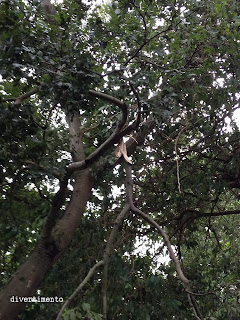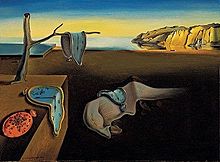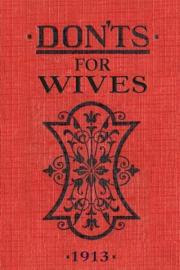We visited Kyoto today.
Kyoto, formerly the imperial capital of Japan is now its 8th largest city. It is 14 minutes by Shinkansen from Shin-Osaka station to Kyoto station. However, as we were setting off from Sheraton Miyako Hotel, it is much cheaper and just as quick to travel by regular train. Here’s how the 2 options stacked up:
Shinkansen:
Tannamachi 9 Chome station to Shin-Osaka Station (changeover at Namba Station)
Shin-Osaka station (Shinkansen Nozomi 360)
Total cost – ¥1,650
Total travel time - 52 minutes
Regular train:
Tannamachi 9 Chome station to Temmabashi station
Shin-Osaka station to Gion-Shijo station in Kyoto (Keihan Line Ltd Express)
Total cost – ¥600
Total travel time - 60 minutes
Besides, the places I’d like to visit are closer to the Gion-Shijo station anyway.
The weather in Osaka and Kyoto been really hot and dry, topping 30°C everyday. Before I left Hong Kong, the weather forecast on my iPhone was for cooler temperatures and a fair bit of rain. I don’t think I’ll be needing the raincoat and spare pair of shoes I packed! Anyway, the point is, whilst I had originally planned a more ambitious schedule for Kyoto, I don’t think I am up to it in this scorching heat. So I’ll pare down to the top 3 places - Ginkakuji (銀閣寺, Silver Pavilion), Gion (祇園) and the cultural show at Gion Corner. The focus is on traditional Kyoto, on the eastern side of the Kamogawa River. Have to leave out the manga museum, the Imperial Palace and the Nishiki Market (錦市場, Nishiki Ichiba).
Here is a great website for information on Kyoto
http://www.japan-guide.com/e/e2158.html
I highly recommend the cultural show at Gion Corner. Firstly, whilst the performances are in Japanese, the introductions are conducted in English and it is aimed at tourists. You get a “taster” of 7 different Japanese performance/arts – Chado (tea ceremony), Koto (Japanese harp), Kado (flower arrangement), Gagaku (court music), Kyogen (ancient comic play), Kyomai (Kyoto style dance performed by Geiko or Maiko) and Bunraku (puppet play). The show lasts an hour and there are 2 performances each day at 6 and 7 pm. I learnt the hard way that tickets are only on sale from 5.30 pm – I headed to the theatre as soon as I got off the train to make sure I secured our tickets for the 6 pm performance. That’s not all, due to wonky map reading by one in our group, a 10 minute walk from the station turned into a 40 minute walk in the heat. (Did check out the Kenninji Temple along the way though). Funny thing was, no one in Kyoto knew where the theatre is – even when I showed them the address etc in Japanese. Definitely something for foreigners only! In fact even the concierge at the hotel in Osaka had not heard of this performance. Pity – it should be better promoted. In fact the theatre was only 1/3 filled for the 6 pm show.
 |
| Kyomai performed by Geiko (Geisha) |
Before I left Hong Kong, I printed off a discount coupon from the theatre’s website
http://www.kyoto-gioncorner.com/global/en.html.
The full price of an adult ticket is ¥3,150 and ¥2,800 with discount. It is even cheaper for young persons - ¥1,900 for 7-15 year olds and ¥2,200 for 16-22 year olds.
We had lunch at a traditional Japanese restaurant close by the theatre, along Hanami Koji Dori. This is a cobbled stone street with preserved machiya houses converted into restaurants. The restaurant we picked offers a choice of traditional tatami seating and western style dining tables. As the tatami seating did not have a cross-legged-challenged-people friendly “pit” under the table to hang your legs, I opted for the regular dining table. The pretty little Japanese garden at the back of the dining area was very pleasant especially when viewed from the air conditioned interior. The four of us either had the Japanese beek steak lunch set or the more traditional Japanese tofu/sashimi/tempura lunch set. Total cost for 4 meals is ¥13,110. We were served by a very gracious lady in kimono.
We then headed off to Shijo Dori to catch a taxi to Ginkakuji (銀閣寺, Silver Pavilion). This is a Buddhist temple originally intended to be covered in silver, similar to the Kinkakuji Temple (Golden Pavilion) which is covered in gold. The taxi ride cost us ¥1,520 in a super hot taxi whose driver kept nodding off….seriously, I had to wake him up when the lights turned green! Even my attempts to chat with him only worked for a bit. At least his eyes were opened when he was driving, so I thought I’d let him doze at the stop lights. Funny thing, the return trip cost us only ¥1,200. Mmmh, do you think we were taken for a ride??
The walk to the temple from the street is lined with souvenir shops and eateries. Very my kind of thing. We stopped off for shaved ice cups, mochi and some souvenirs on the way out. Bought myself some furoshiki風呂敷– scarve sized fabric for wrapping gifts, bento boxes etc. Its my current “thing”. My daughter was delighted with her shurikens 手裏剣(“sword hidden in the hand”) or as some refer to them as “ninja throwing stars”.
Entrance to Ginkakuji costs ¥500 per person. Only disappointment is that you can only admire the temple from the outside. As they don’t throw open the doors and illuminate the interior, we had no idea what the temple is like. We were free to explore the extensive gardens, including a walk up the hill. There is also a gift shop on the way out. Great for a respite from the heat.
 |
| Ginkakuji in Kyoto |
Then, back to Shijo Dori by taxi. We drove via a different route, passing the Kyoto University and the Heian Shrine 平安神宮, Heian Jingū, and through the shrine’s giant red torii gate. We had a bit of time to fill before heading back to the theatre at 5.30pm. So, some retail therapy along Shijo Dori. Shijo Dori is filled with shops selling traditional Japanese goods, souvenirs and foods such as pickles, dried foods, mochi, rice crackers, fans, fabrics etc. Stock up here for gifts.
Headed back to Osaka for dinner – shabu shabu.
For more information on Kyoto, I found this to also be an excellent website:
http://www.kyoto.travel/




































 ced me to make an exception on Friday when we popped into Dressed Salads in the ifc Mall (Central). I had the "special of the day" which was lamb kebab with a Greek salad. It was a beautiful meal with just the right portion of meat, fetta cheese and olives. Here's a picture of the dish:
ced me to make an exception on Friday when we popped into Dressed Salads in the ifc Mall (Central). I had the "special of the day" which was lamb kebab with a Greek salad. It was a beautiful meal with just the right portion of meat, fetta cheese and olives. Here's a picture of the dish:







 This is the large sized mould. When you use it during cooking, it will be "upside down". You will have to balance it in a dish by resting the edges on the edge of the bowl. However, if your dish is too big, rest 2 chopsticks across the top of the dish to support your goldfish mould. Ensure the mould is lev
This is the large sized mould. When you use it during cooking, it will be "upside down". You will have to balance it in a dish by resting the edges on the edge of the bowl. However, if your dish is too big, rest 2 chopsticks across the top of the dish to support your goldfish mould. Ensure the mould is lev

